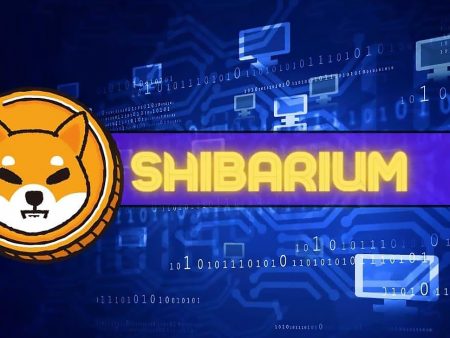ERC20 is a technical standard that allows the creation of tokens on the Ethereum network. They are widely used in the blockchain and crypto world, playing an important role in the development of dapps, DeFi and the NFT industry.
Follow this article from AZCoin to learn more about ERC20, how it works and its important role in the Ethereum ecosystem.
What is ERC20?

ERC20 (Ethereum Request For Comment 20) is a technical standard for tokens on the Ethereum blockchain, used to create and issue tokens to ensure compatibility and interoperability between smart contracts.
This standard specifies the basic functions that a token must comply with, such as transferring tokens, checking account balances and approving token spending by other smart contracts.
History of ERC20
The ERC20 standard was introduced in 2015 by Fabian Vogelsteller, a blockchain developer, with the goal of creating a unified standard for tokens on Ethereum. Because of its simplicity and interoperability between tokens on the network, ERC20 has become the most popular standard for tokens on Ethereum and is the foundation for the development of the Ethereum ecosystem as it’s today.
ERC20 standard rules

ERC20 defines a set of functions and methods for managing tokens, including:
- Name: Identifies the name of the token.
- Symbol: The shorthand symbol for the token, e.g. ETH, USDT, BNB, Jasmycoin,…
- Decimals: Identifies the maximum number of decimal places that can be used for the token. For example: Ethereum has 18 decimal places, while USDT has 6 decimal places.
- TotalSupply: Identifies the total number of tokens created.
- BalanceOf: Look up the token balance of a specific wallet address.
- Transfer: Allows the transfer of tokens from one wallet address to another.
- TransferFrom: Allows a user to transfer tokens from another user’s wallet, but only if that user has given prior permission.
- Approve: Allows a user to confirm permission for another user to transfer tokens from his wallet.
- Allowance: Checks whether a user has allowed other users to transfer tokens from their wallet and the amount of tokens allowed.
Why is ERC20 important in the Ethereum ecosystem?

ERC20 plays an important role in the Ethereum ecosystem for the following reasons:
- Compatibility: The ERC20 standard ensures that all tokens that comply with this standard can interact with each other and with DApps on Ethereum. This creates a seamless and consistent ecosystem.
- Easy to develop: ERC20 provides a simple and clear framework for developers to create and deploy new tokens. This saves time and resources and encourages innovation and rapid development of new projects.
- Widely accepted: Most cryptocurrency exchanges and wallets support ERC20 tokens, making trading and managing these tokens easy and convenient for users.
- Diverse applications: ERC20 tokens can be used for a variety of purposes, from issuing digital shares for startups to creating rewards in gaming applications and customer loyalty programs.
- Increased liquidity: Having a common standard like ERC20 makes it easier for tokens to be listed on multiple exchanges, increasing their liquidity and accessibility to investors and users.
How is ERC20 different from iOT? You can refer to: Internet of Things (IoT), Retik Finance,…
Top 6 popular ERC20 Token types today

ERC20 tokens can be classified into different types based on their intended use and features. Here are some common types:
- Stablecoins: These are tokens designed to maintain a stable value, often pegged to a specific asset such as USD or gold.
- Utility tokens: The most common type, used to provide access to a specific product or service on a blockchain platform.
- Security tokens: These tokens represent ownership rights in an asset or company and often need to comply with legal regulations regarding securities.
- Governance tokens: These tokens allow holders to participate in the management and decision-making of a project or platform.
- Reward tokens: These tokens are used to reward users for their participation or contributions to the platform.
- Lending and borrowing tokens: These tokens represent loans or collateral in DeFi protocols. For example, cDAI is a token that represents DAI loans on the Compound protocol.
ERC20 token storage wallets

There are many e-wallets that support storing ERC20 tokens, including:
Hot wallets
These are wallets that have a direct connection to the internet, allowing users to make quick transactions. Popular hot wallets include: MetaMask, Trust Wallet, Coinbase Wallet, etc.
Cold wallets
These are wallets that don’t have an internet connection, are more secure than hot wallets and are suitable for storing large amounts of tokens. Popular cold wallets include: Ledger Nano S, Trezor, etc.
Application of ERC20 Token standard
Below are some of the main applications of ERC20:
- Token issuance: ERC20 allows developers to issue and manage tokens on the Ethereum platform easily and in a standardized manner.
- ICO support: Many blockchain projects use ERC20 to issue tokens in ICOs, helping to raise funds from the community.
- Integration into DApps: ERC20 tokens can be used in many different dApps, from financial applications to games.
- Payments: Many ERC20 tokens are used as a means of payment or exchange of value in blockchain ecosystems.
For more details on these standards and how they can be used on the best crypto exchange 2024, AZcoin is a great resource to explore.
Other ERC standards

In addition to ERC20, there are many other ERC standards on the Ethereum blockchain, each serving different purposes and applications:
- ERC721: This is a standard for NFTs. Each ERC721 token has a unique value and can’t be replaced by another token. This standard is often used for unique digital assets such as artwork, collectibles and video game items.
- ERC1155: This standard allows the management of multiple types of tokens, both fungible and non-fungible, in the same smart contract. This helps reduce transaction costs and optimize performance.
- ERC223: This standard is designed to solve the problem of losing tokens when sending to an address that does not support ERC202. It adds protections to prevent accidental token transfers.
- ERC777: This is an advanced standard for alternative tokens, allowing for more complex functions such as hooks when transferring tokens, improving interoperability between smart contracts.
- ERC1400: This standard is designed for security tokens, providing features such as ownership control and regulatory compliance.
Conclusion
Hopefully, the information about the ERC20 standard and its applications has helped you gain a better understanding of its role in blockchain. Wishing you effective use of these tokens and always paying attention to the privacy policy to protect your assets!

I’m Jessi Lee, currently living in Singapore. I am currently working as a trader for AZCoin company, with 5 years of experience in the cryptocurrency market, I hope to bring you useful information and knowledge about virtual currency investment.
Email: [email protected]











